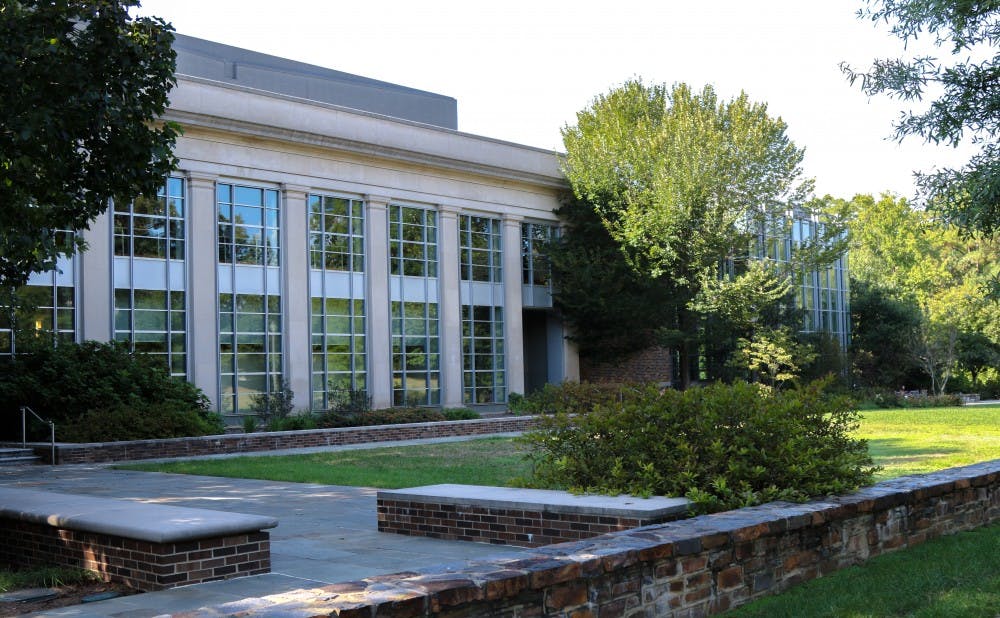Many Duke students love the new restaurants and shiny apartment complexes that have recently sprung up in Durham. The downside to this? Gentrification and rising rents that lead to longtime Durham residents to be evicted from their homes.
Durham has the highest eviction filing rate among North Carolina’s ten largest counties, with one eviction case filed per 29 residents in the last fiscal year. From July 2015 to June 2016, there were an average 887 eviction cases filed each month on average.
But the Eviction Diversion Program at Duke is seeking to help residents avoid evictions and their consequences. It was launched in August by Duke’s Civil Justice Clinic along with Legal Aid of North Carolina and the Durham County Department of Social Services.
“Both Legal Aid and our clinic found ourselves doing more and more eviction cases,” said Charles Holton, director of the Civil Justice Clinic and Law ‘73. “We began to look more closely at the issues and found that Durham leads the state in rate of evictions per population size.”
He explained that evictions are particularly troublesome because they go on your credit record, which future landlords will look at. They can also lead to the breakdown of family structures and social relationships or interfere with school and health care access. In addition, evictions often lead to homelessness or a gradual decline in the quality of housing you can get.
Most landlords also hate evictions because this means they miss several months of rent coming in, Holton added.
The Eviction Diversion Program was designed in part by Ben Wasserman, Law ‘17, who worked in the Civil Justice Clinic. Holton asked him to help research similar programs in other cities and adapt them to Durham.
“I jumped on the opportunity because I thought it was a really cool way to make a tangible impact on Durham from a policy perspective,” Wasserman said.
The program helps connect tenants with legal and financial aid to avoid displacement from evictions, he explained. When an eviction notice is served, a flyer about the program is also included and residents can call Social Services to evaluate the status of their lease.
“We make an inquiry about that to see what else is going on,” Holton said. “Sometimes landlords will bring evictions to retaliate against complaints [from tenants].”
Within 48 hours, Social Services determines if they can help with emergency rental assistance funding for special circumstances like tenants who are veterans, handicapped or have children.
If tenants are willing to participate in the Eviction Diversion Program, their papers are sent over to Legal Aid where the situation will be assessed from a legal status.
There are about ten to twelve law students involved in the program who work on about 50 cases a month, Holton explained. They engage in negotiations with the landlord or landlords’ attorneys, which are often successful. They can often avoid evictions going through by negotiating an exit from the lease.
“If lease is salvageable, we work out those terms,” Holton said. “Then hopefully [the] case gets dismissed. There are various outcomes that are unique to each situation, but we can often negotiate out. Sometimes we have to negotiate out in court.”
He noted that this work can be difficult because of the quick timeline for eviction cases. The clinic often doesn’t receive the case until a day or two before the scheduled hearing.
Another issue is the lack of staff in the clinic. Although there are more than 900 eviction cases a month filed in Durham, only about 50 make their way to the clinic—which is still a full-time workload that can be overwhelming for their small employee base.
“We have very few resources,” Holton said. "If we hope to make a dent in the eviction process, [we] need numbers.”
Jesse McCoy, supervising attorney for the Civil Justice Clinic, noted that they are currently designing a new brochure and talking with community agencies to inform them of the program.
The clinic has been making pitches to the Durham city government to increase funding. Holton pointed out that several studies in other cities have shown that when there is legal representation in eviction cases, the rate of judgment drops by 50 percent.
Holton explained that there are many evictions in Durham because its population has significantly increased in recent years, but the stock of affordable housing has not. And because of gentrification, properties that used to be at affordable levels get upgraded, which means tenants can no longer afford them.
McCoy’s suspicion is that Durham enjoyed relatively affordable rental rates compared to neighboring counties for many years but then became a much more popular place.
“Now that we have a large population that is able to pay more, it’s easier for landlords to do a little renovation and demand a higher rent rate," he said.
A major focus of the Eviction Diversion Program now is expanding its reach to combat the problem.
“We hope to continue on in at least the level that we are in the clinic,” Holton said.
Wasserman noted that he thinks their work can alleviate Durham residents’ distress and foster improved communication between tenants, the Civil Justice Clinic and the city government.
“I’m very excited about the program, I think it’s huge,” he said. “Something like this can really solve a problem that is primarily a lack of coordination among Durham stakeholders.”
Get The Chronicle straight to your inbox
Signup for our weekly newsletter. Cancel at any time.

